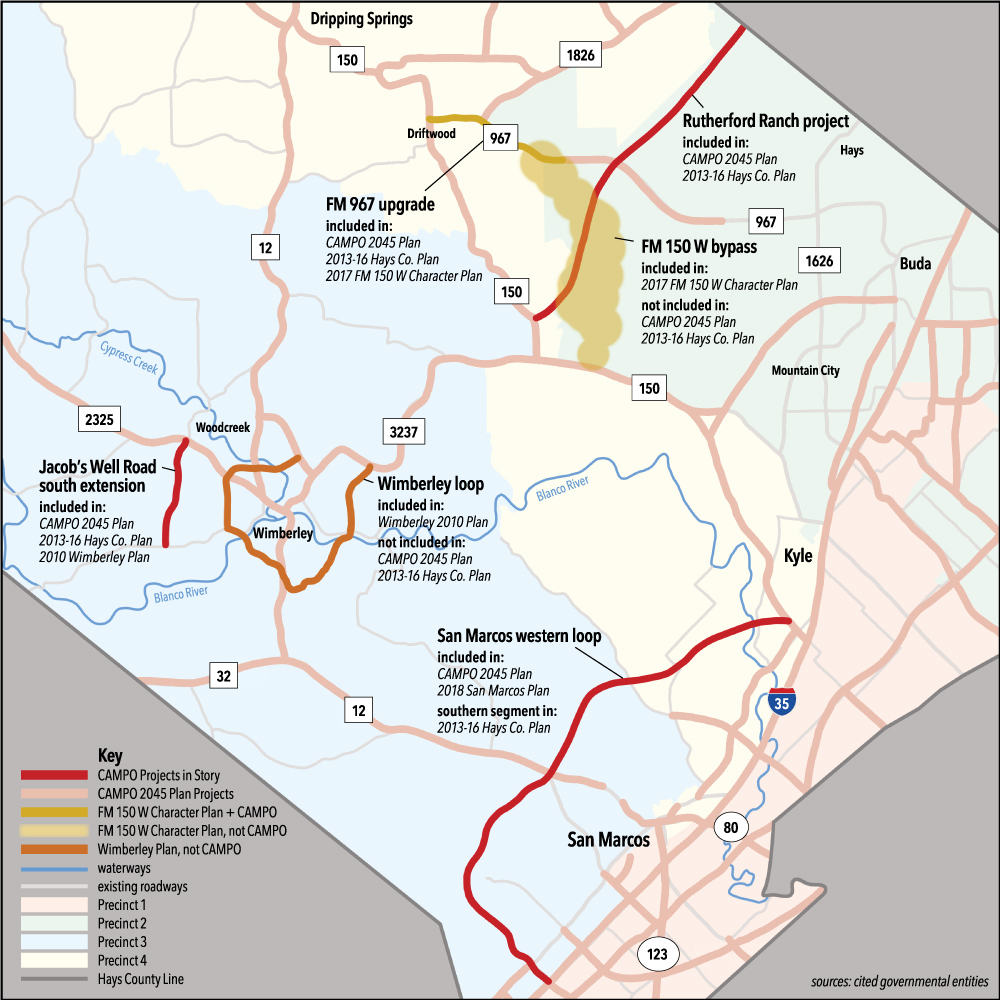Hays County is in the process of updating the Hays County Transportation Plan. The Virtual Open House asks for public input to identify safety improvements, improve regional connections and mobility, and plan for future growth and development over the next two decades. There is little discussion of the preservation of scenic byways or strategic land conservation.
The Transportation Plan seems like only one element of needed planning. A comprehensive look at County planning would balance Transportation, Water, and Land elements. Protecting water resources, limiting development in sensitive areas, and preserving the scenic qualities of the Hill Country are essential to maintain the quality of life and economic viability of Hays County.
Action Needed – Before October 10th, 2020
-
-
- View the Virtual Open House presentation
- Take the survey before October 10th, 2020
- Optional: Share specific comments by email to info@haystransportationplan.com or by mail to Attn: Hays Transportation Plan, PO Box 5459, Austin, Tx 78763
-
Background
In western Hays County, many of the roads are slated to be enhanced or expanded with additional lanes. Given the sensitivity of the region and limited water supply, it would be wise to preserve scenic by
Roadway planning in the Capital Area moved from regional to local levels with the adoption May 4 of the CAMPO 2045 plan, and one principle is bedrock: “Groundwater has taken us as far as it can go.” Lon Shell, Hays County Commissioner Pct. 3, offered that guiding assessment, as the nascent County transportation planning process picked up where CAMPO ended. Conservation is central, said Shell. “If we get in the same drought we saw about ten years ago, the impact will be much worse with all the growth that has occurred since then. We would see something catastrophic.”
From CAMPO 2045 to City and County
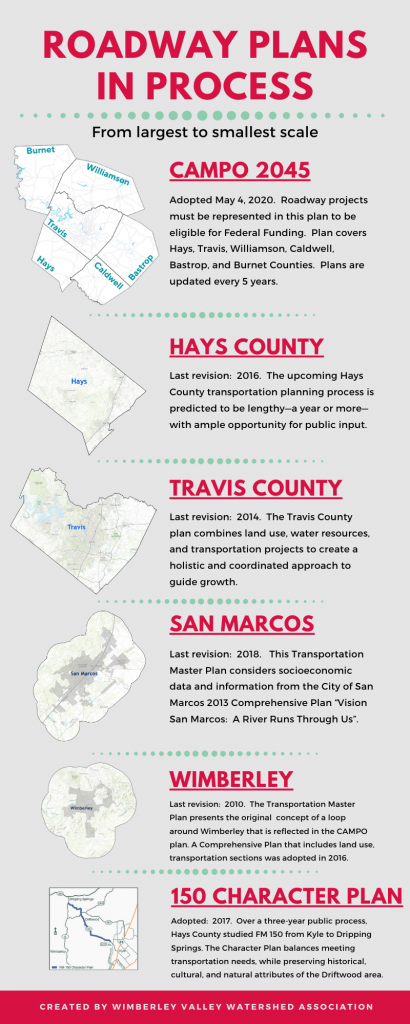
County and municipal planning efforts under way must tackle development that on CAMPO’s watch appears unstoppable. The Capital Area Metropolitan Planning Organization 2045 Regional Transportation Plan lays out an estimated $42 billion across 600 driving, walking, biking, transit, and technology projects in six counties. Its scale sparked vocal opposition. “I was a little bit surprised at the level of reaction,” said Shell, “CAMPO has very little to do with what we do locally. It can be confusing and easy to assume that what you see on plan is what will be done, when really it’s a local decision. The county plan is more important than it might have been in the past.”
Hays County Commissioners Court took up the CAMPO plan at its April 28 meeting. Mark Jones, Commissioner Pct. 2, County CAMPO representative, said the plan simply incorporates existing city and county plans. He said the comprehensive update of the 2013 transportation plan for Hays County, which itself was revised in 2016, will allow for roadway changes, with technical and public input. “When that plan is adopted by this Court, and when the cities update their plans, then we amend the CAMPO 2045 plan.”
Debbie Gonzales Ingalsbe, Commissioner, Pct. 1, questioned a western loop around San Marcos included in the CAMPO plan. Jones said the loop stems from city’s 2018 plan as a flood and safety measure. Jones drew a parallel to County planning: “We do the same thing CAMPO does. When Buda adopts their transportation plan—Kyle, Dripping Springs, San Marcos—then that becomes part of our plan also.”
The timing of the CAMPO vote also was necessary, said Jones. “Delaying would put us in jeopardy of not being eligible for federal stimulus money that could be coming down at some point,” he said. “In 2009, in the American Recovery and Reinvestment Act, the Dallas/Fort Worth area received about $260 million worth of stimulus funds, and so that’s the kind of thing we’re looking at,” said Jones. “We have a lot of shovel-ready projects, mainly along the [I-35] Corridor—the biggest part of growth—so we wouldn’t want to lose an opportunity to have that.”
Shell said the County transportation planning process will be lengthy—a year or more—with ample opportunity for public input. “I’m hoping to see more involvement in our local plan, to have people participate in a thorough public process to decide what the county should look like. That’s where it’s done.”
The Court in March also launched the Parks and Open Space Advisory Commission to consider proposals toward a potential bond package in the fall. Chaired by Scott Way and facilitated by Karen Ford, POSAC will evaluate worthy parks and recreation projects and make room for open land and flowing water as the new transportation plan evolves.
Growth Projections: From Prophecies to Plano?
Projections of traffic and population stirred simmering chicken-and-egg anxiety about self-fulfilling prophecies. “The reality is that if you plan, and intend to build particular roadways, you can change how growth is going to happen,” said Shell. He cited Williamson County as an example of transportation planning and the demand for added capacity, but said Hays is in better shape. “I am not as worried about the capacity of the roads in western Hays County. Roads we have did not create development, but purely serve to connect. Closer to the Corridor, projects are needed to improve capacity and mobility. As you get away from I-35, they are not, and any building will be based solely on traffic demand and safety needs.”
Shell said an update of Wimberley’s 2010 plan is overdue, too. That plan contains the genesis of the loop around the town shown in the CAMPO plan, which Shell said did not represent “hard roads.” Likewise, he said he did not support extending Jacob’s Well Road south to Wayside Drive, as shown in the plan.
Roadways ultimately depend on funding. “Almost all projects now are funded or at least decided locally,” said Shell. “CAMPO represents federal dollars, through several different programs, with state involvement. My philosophy with bonds is to get citizens’ support locally, then leverage that with CAMPO support. We need to do what we can to improve safety. We couple that with conservation and protection of groundwater. This can take many forms—subdivision rules, conservation development. To create something sustainable, requires a different type of growth. If we do those things right, and look at safety and conservation together, the stress on transportation will be different.”
Growth is limited by current conditions, Shell noted. “The lack of any major water supply line—which I don’t support for the Wimberley Valley—limits what can happen. We have to properly manage groundwater, and all work together. That will result in a place where we all want to live. That’s where we all win. People who want to live here don’t want to move to a place that looks like Plano.”
A Character Study in FM 150 West Conflicts
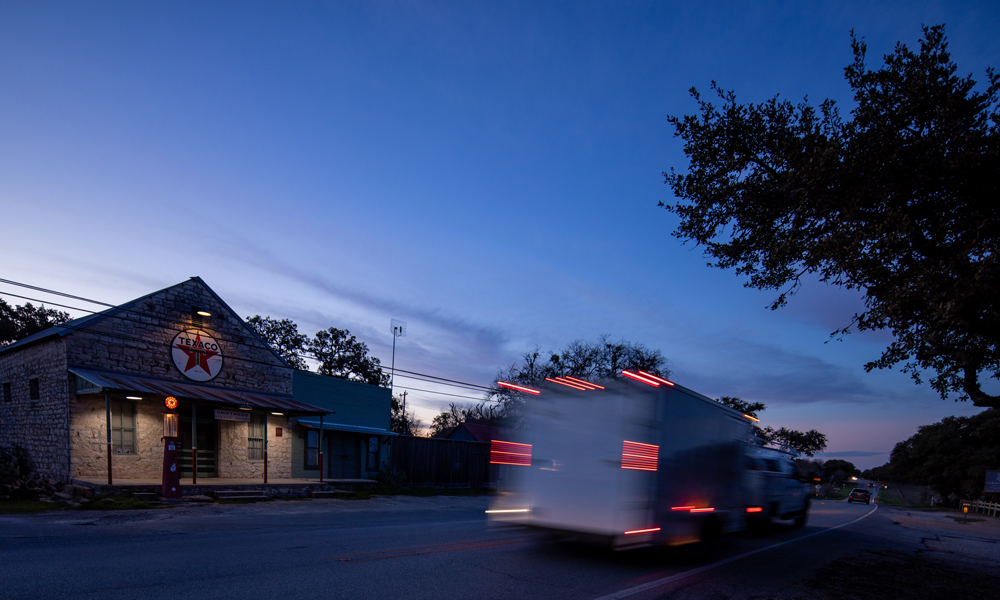
Citizens’ desires, said Jones, are reflected in an extension of Escarpment Boulevard from Austin through Rutherford Ranch to FM 150 West below Driftwood in the CAMPO and existing county plans. “The reason that was put in there, when the Rutherfords still owned that, was its likelihood to be developed. The other reason was because on 150 from Hays City Store through Driftwood, we have a lot of safety issues. That loop was instead of some major expansion through Driftwood.”
Plans for Loop 150 require clarification, at a minimum. The $25 million extension from Austin planned for 2035 conflicts with bypass recommendations in the County’s 2017 FM 150 West Character Plan executed by K Friese + Associates, the same engineering consultant hired for the County’s plan update. That milder bypass would extend from FM 150 West just east of Hays City Store northward to FM 967, perpendicular to the plans’ Rutherford Ranch roadway.
Walt Smith, Commissioner, Pct. 4, said the 150 Character Plan must be honored, comparing it to the top of a pyramid, resting on “literally thousands and thousands of hours of community input that are the foundation stones. We have to ensure that on a daily basis, the small decisions that we make have an impact on those foundational stones.”
Smith praised citizens who want to protect the area for future generations. “I’m very proud of the work that we’re doing with TESPA, and with the Wimberley Valley Watershed Association, specifically, on water quality. Our new, and possibly the first in Texas, conservation development plan—I’m really proud of that. Maybe we can do something for water quality that’s one of those incremental changes on a daily basis.”
Conservation As Transportation Equal
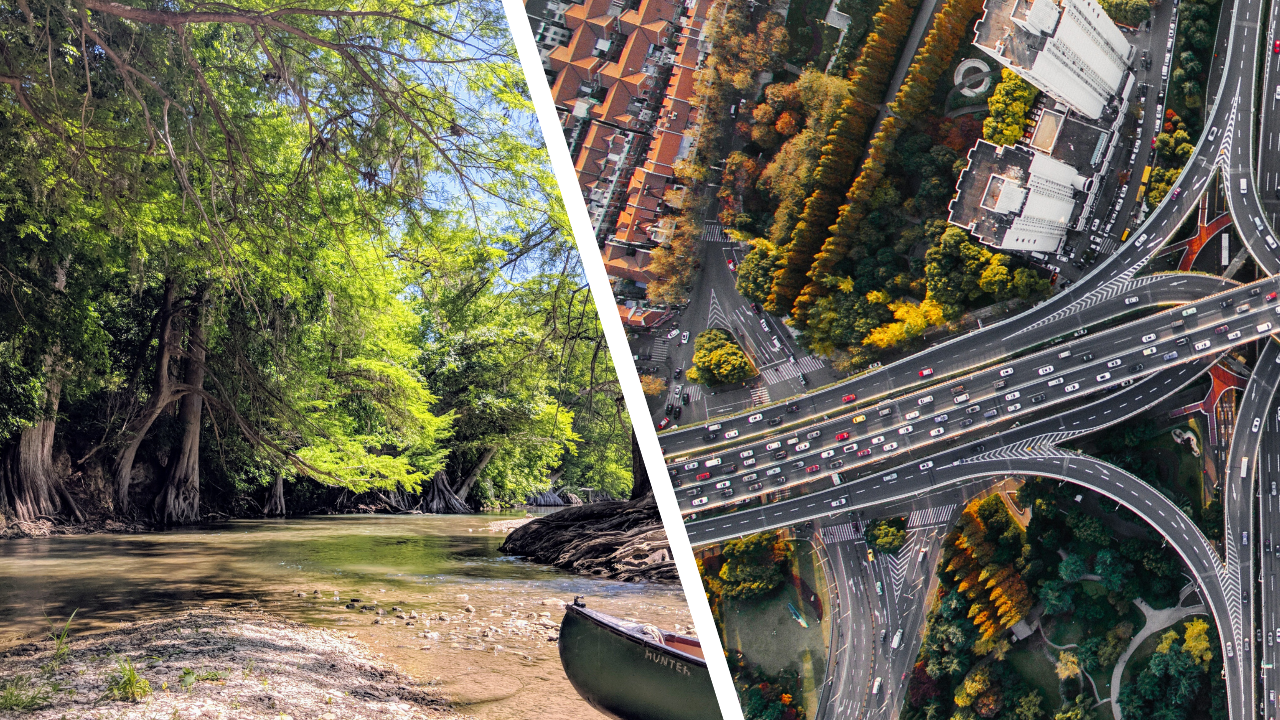
County Judge Ruben Becerra summarized the meeting’s extended CAMPO discussion. “I think the conservation efforts for 150 are very wonderfully done. The spirit of all the communications that came my way are about conservation. They are about keeping the Hill Country, Hill Country. They are true to environmental stewardship and all of these efforts. I believe that the citizenry who has been involved intently, aggressively, and passionately deserves to be heard.”
An example for that holistic approach is Travis County’s 2014 LWTP (Land, Water & Transportation Plan). This plan establishes a framework for evaluating improvements while protecting critical natural resources. Development and transportation priorities overlay land conservation inventory and priorities to create a third, blended “growth guidance” plan that balances conservation and development.
“I think the opportunities for conservation are there to get some great projects going,” said Shell. “We have plenty more that need to be done, and that would be widely supported by everyone in the County. POSAC is important in that effort, to put a process in place. The more we do, the more it will be popular. If we show respect for our values and our history, then everyone, no matter where they live, can agree.”
Taken together, the County’s planning update and POSAC program offer hope that road construction in watershed areas can be deferred or scaled down prudently to provide only the necessary safety improvements—limited access, turn lanes, shoulders, and bike lanes—that are affordable and minimize ground cover and disruption. Proposed conservation partnerships on key tracts of land remove roadway concerns altogether.
“Scenic Hill Country” designations can support tourism and the arts, and encourage transportation that sustains the natural beauty, delicate ecosystem, and relaxed atmosphere that make the region attractive. Scenic easements have teeth, too, and the same kind of market value that make conservation easements so effective to preserve open space while maintaining landowners’ possession and use.
Regional conservation could provide a more integrated approach to roads, improvements, and subdivisions that prioritizes protection of the watershed and aquifer, as well as property and natural resources, equally with safety and convenience. In particular, subdivision rules could include not just conservation-based development, but also fundamental scientific research to implement the Jacob’s Well Groundwater Management Zone. A numerical groundwater flow model, anchored by dye-tracing studies to map aquifer system dynamics, will increase likelihood of success.
Intersecting Priorities Toward Sustainability
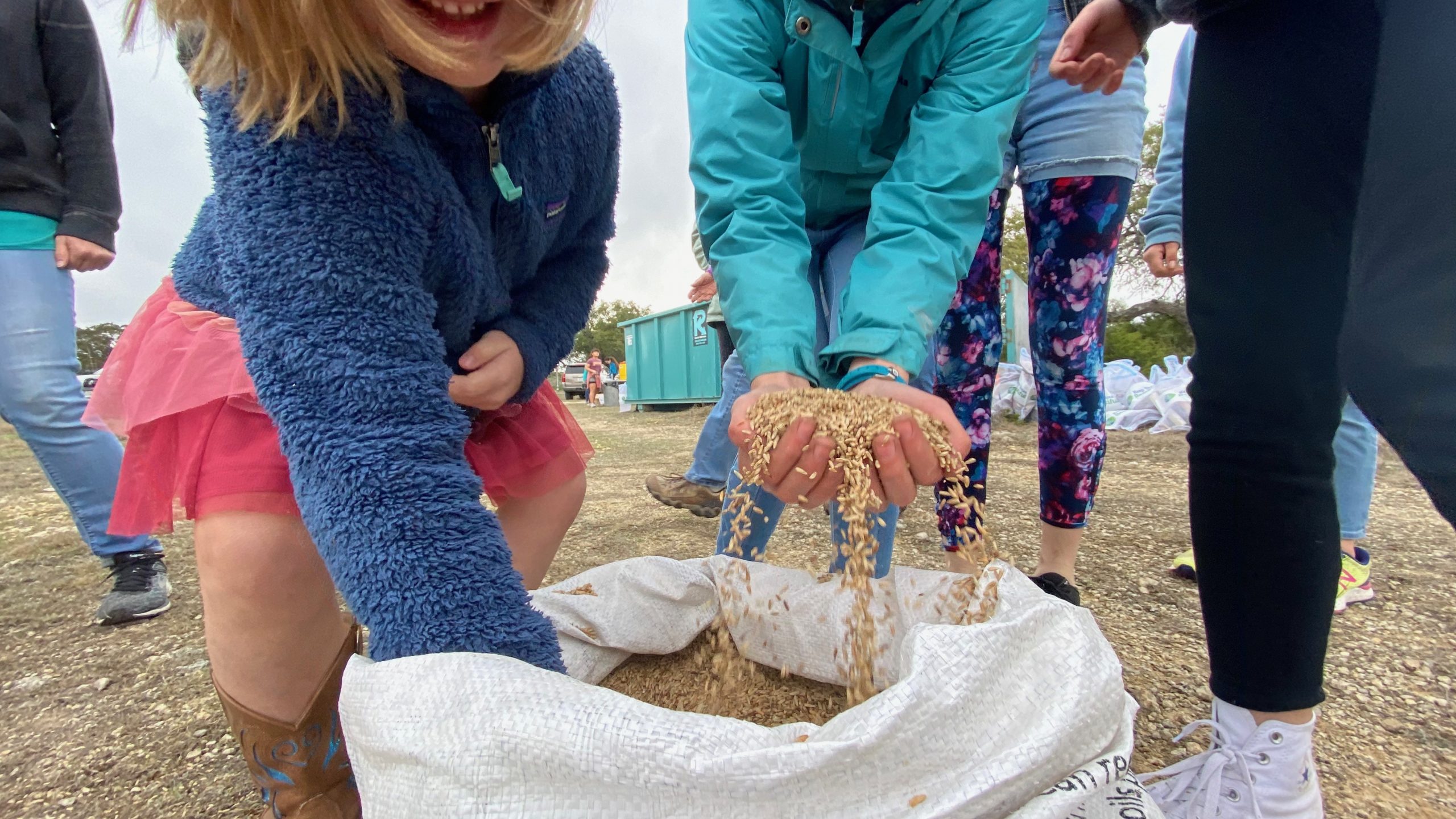
Reaching consensus will take work, said Shell. “We will look at how we roll together rules for subdivisions that embody what the community, how we create the environment for sustainable development, and how it is incentivized. That’s what will really change the landscape, and create something the market will respond to.”
“People will understand what we can protect and why,” said Shell, ticking off a list of good conservation ideas: “Rainwater systems, clustering developments, offsetting acreage, a habitat program, water quality measures, open space. These become amenities, and will have high demand. People would love them, and they would put us along that path that is sustainable.”
In the April 28 meeting, Judge Becerra concluded, “We should articulate as a commission the clarity that we don’t want a superhighway cutting through any part of our county, especially west of 35. We don’t want that, yet we have people who need that assurance. When I was asked to put this on the agenda, it was no problem for me. Absolutely. I don’t care to pave over the recharge zone. I believe in conservation. I believe in all these pieces we’ve been highlighting as a community. The effort is wholesome. The effort is conservation. The effort is, what happens in the west side of the county affects the east side of the county with flooding, etc.”
One final principle in planning—economic conditions—may overwhelm even the best of plans. CAMPO passage did not come without considerable debate over responses to climate change, the unknowable impact of the COVID-19 pandemic, and the loss of tax revenue from lower oil-and-gas prices. Changes in population trends revealed by the 2020 Census may affect funding allocations.
The ground is shifting beneath us. Water is scarce, and open spaces are scarred by a pipeline project and eroded by development. Charming roadways integral to life in Hays County and the Texas Hill Country are bold lines in upgrade plans. The mitigating burden lies on public officials and their consultants, informed by citizen engagement and supported by research and conservation. When market and safety integrate with science and multigenerational love of the land, we can all move around and still splash in the water.

